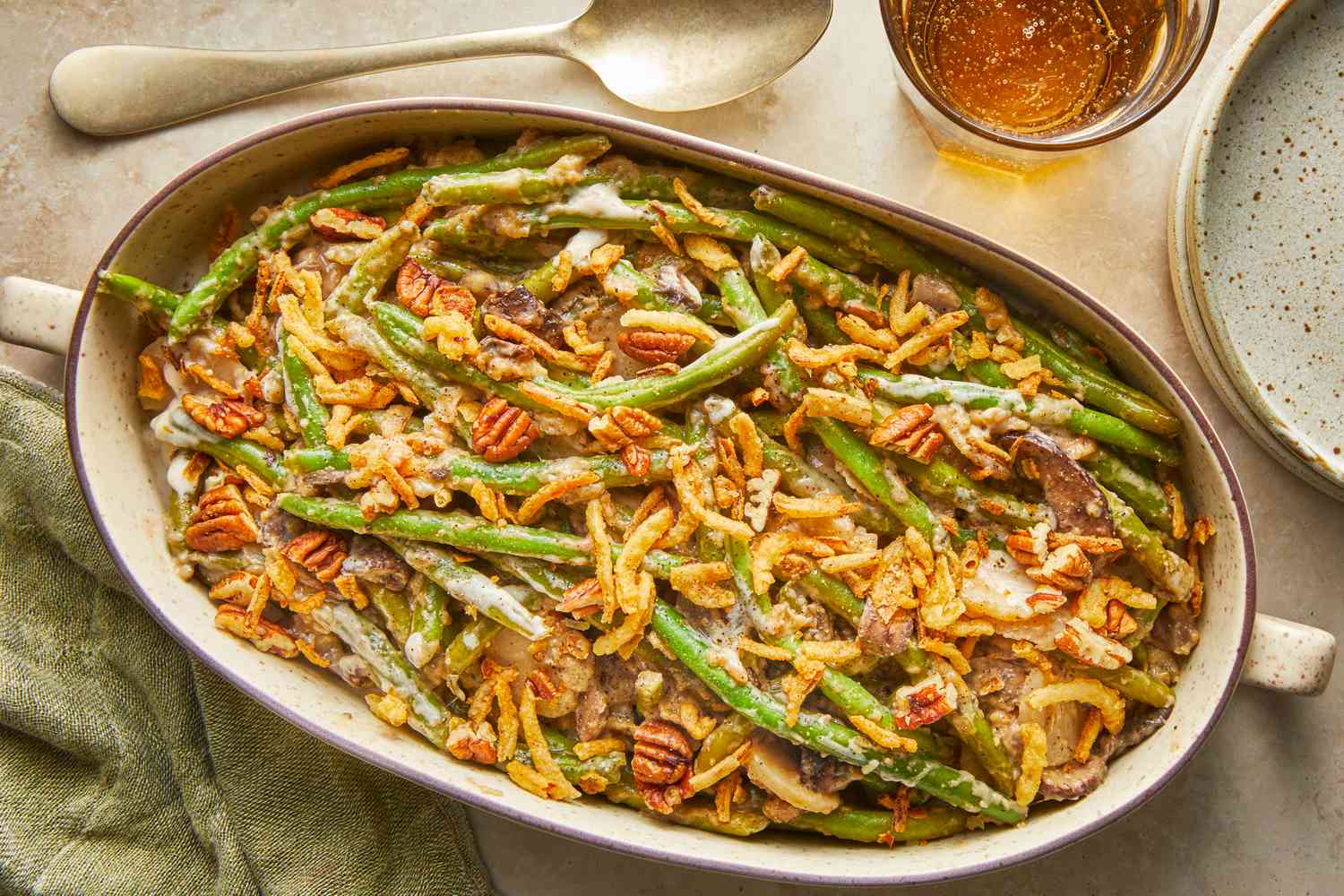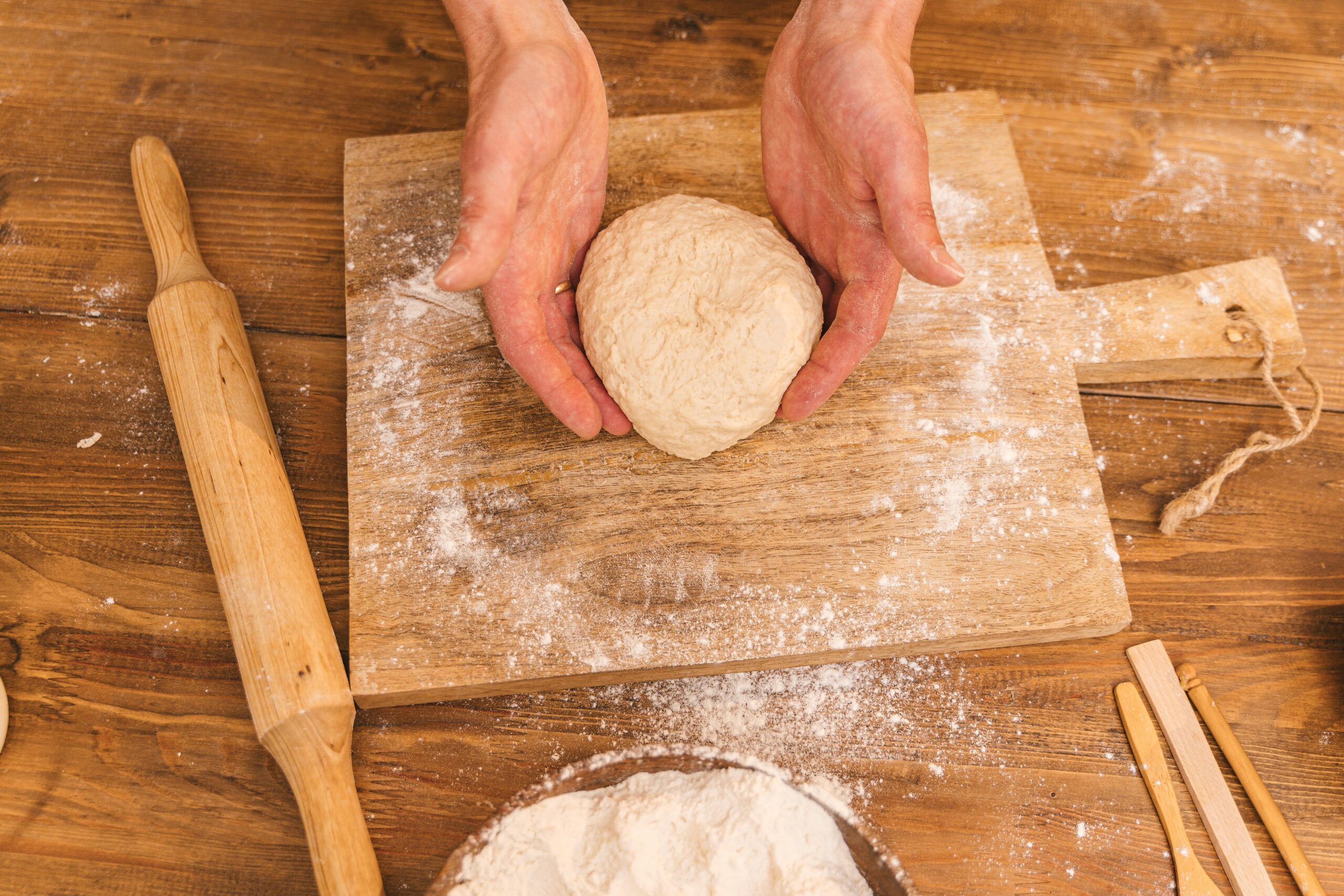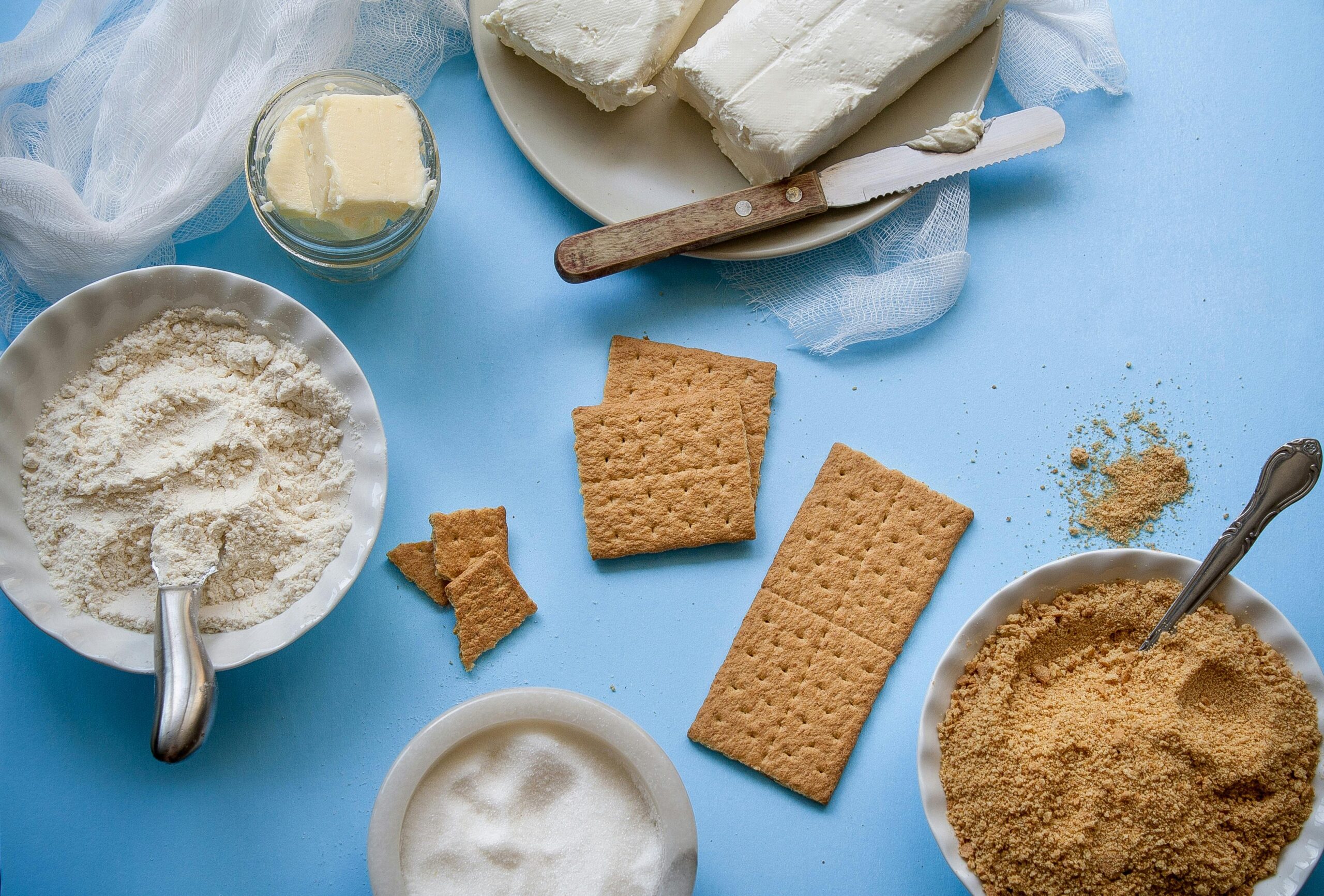Green bean casserole has been a staple of holiday tables and weeknight dinners for decades. Creamy, savory, and topped with golden, crispy fried onions, it’s a dish that brings comfort and nostalgia with every bite. Whether you’re preparing it for Thanksgiving, a potluck, or just because you’re craving something cozy, this guide will walk you through how to make the perfect green bean casserole from scratch.
Why Green Bean Casserole?
Originally introduced in the 1950s, green bean casserole is a perfect balance of texture and flavor: tender green beans, creamy mushroom sauce, and a crispy topping. It’s easy to prepare, budget-friendly, and universally loved.
This version of the recipe includes both traditional and homemade options, so you can choose how from-scratch you want to go.
Ingredients and Measurements
Classic Version (Serves 6–8):
- 1 can (10.5 oz) condensed cream of mushroom soup
- 3/4 cup milk
- 1/8 teaspoon black pepper
- 4 cups cooked green beans (fresh or canned)
- 1 1/3 cups crispy fried onions (like French’s)
Optional Add-ins:
- 1/2 cup shredded cheddar cheese
- 1/2 teaspoon garlic powder
- Pinch of nutmeg for added depth
Homemade Mushroom Sauce Version:
- 1 tablespoon butter
- 1 tablespoon flour
- 1/2 cup chopped mushrooms
- 1 cup whole milk or half-and-half
- Salt and pepper to taste
Step-by-Step Instructions
Step 1: Prepare the Green Beans
If using fresh green beans, trim the ends and boil them for 5–6 minutes until just tender. Drain and rinse under cold water to stop cooking. If using canned beans, drain and pat dry.
Step 2: Make the Sauce
Classic method: In a large bowl, whisk together the cream of mushroom soup, milk, pepper, and optional seasonings like garlic powder or nutmeg.
Homemade sauce: In a skillet, melt butter and sauté the mushrooms for 3–4 minutes. Sprinkle in flour, stir for 1 minute, then slowly whisk in the milk. Cook over medium heat until thickened. Season with salt and pepper.
Step 3: Combine the Ingredients
Add the green beans to the soup mixture and stir to coat evenly. If using cheese, mix it in at this stage.
Step 4: Bake the Casserole
Preheat the oven to 350°F (175°C). Pour the mixture into a 9×13-inch baking dish. Bake uncovered for 25–30 minutes until bubbly.
Step 5: Add the Crispy Onions
Remove the casserole from the oven and sprinkle fried onions evenly on top. Return to the oven for another 5–10 minutes, or until the onions are golden and crispy.
Step 6: Serve and Enjoy
Let the casserole cool for a few minutes before serving. It pairs perfectly with roasted meats, mashed potatoes, or stuffing.
Tips for the Best Green Bean Casserole
- Use fresh green beans for a crisp-tender bite and brighter flavor
- Don’t overbake after adding onions, or they’ll burn
- Add a bit of cheddar or Parmesan cheese to boost flavor
- A pinch of nutmeg in the sauce brings out the earthiness of the mushrooms
- Double the recipe for larger gatherings—it disappears fast
Variations to Try
- Bacon Green Bean Casserole: Add crumbled cooked bacon to the mixture
- Vegan Version: Use plant-based milk, vegan cream of mushroom soup, and dairy-free fried onions
- Spicy Kick: Add a dash of hot sauce or red pepper flakes to the sauce
- Gluten-Free Option: Use gluten-free cream of mushroom soup and gluten-free fried onions
Storage and Reheating
- Refrigerate: Store leftovers in an airtight container for up to 4 days
- Reheat: Warm in the oven at 350°F until heated through or microwave individual servings
- Freezing: You can freeze the casserole (without the onion topping) for up to 1 month. Add fresh onions and bake before serving
Green bean casserole is more than a side dish—it’s a celebration of tradition, flavor, and simplicity. Whether you go for the quick classic method or take the time to make everything from scratch, the result is always satisfying. This dish is beloved not just for its taste, but for the warm memories it brings to the table.
Try it once, and you’ll understand why green bean casserole continues to be a favorite across generations.






